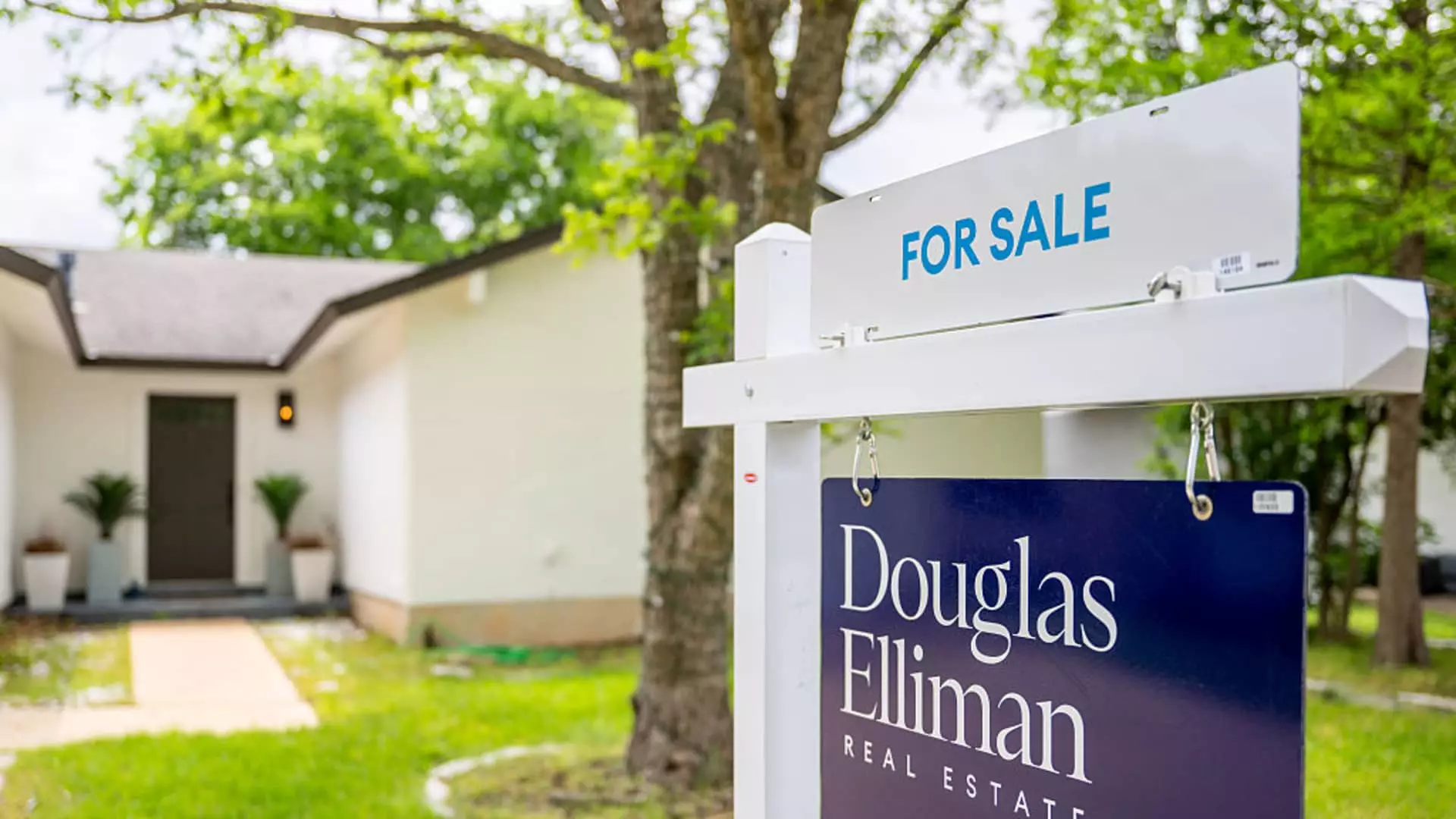The housing market has always been a snapshot of both economic vibrancy and societal sentiment, but recent data indicates a concerning trend that begs for scrutiny. In May, the sales of previously owned homes barely crept upward, achieving a mere 0.8% increase from April according to the National Association of Realtors (NAR). While analysts initially anticipated a slight downturn, this meager uptick casts a pall over the broader narrative surrounding the housing market’s recovery. Despite the figures revealing a slight rise, they also highlight a deeper malaise: a 0.7% decline from May of the previous year. The question must be asked: why are we celebrating a minimal gain when the context tells a more troubling story?
The Regional Divide: Who Is Benefitting?
Examining the regional dynamics reveals intriguing disparities that offer insight into American consumer behavior. The Northeast exhibited the most substantial growth with a 4.2% increase month-on-month, while regions like the West—home to some of the country’s most exorbitant housing markets—saw a drastic 5.4% decline in sales. This divergence beckons attention: is the American Dream losing its foothold in the regions that traditionally symbolize wealth and opportunity? It seems that the soaring prices in these popular locales are pushing buyers away, exacerbating the crisis of accessibility and affordability.
This stark contrast across regions makes it clear that the problem extends beyond mere interest rates or economic predictions. As prices maintain an upward trajectory, particularly with the median price of an existing home hitting a record high of $422,800, one cannot ignore the potential fallout: a further division in socioeconomic classes. Rising prices coupled with stagnating or declining sales could indicate that home ownership—the bedrock of American prosperity—may increasingly slip from the grasp of average citizens.
Mortgage Rates: An Unforgiving Barrier
NAR chief economist Lawrence Yun astutely points out that the dampened sales can primarily be attributed to persistently high mortgage rates, which spiked over 7% in April. This financial burden is a double-edged sword; while it dissuades buyers, it also complicates the market for sellers who wish to capitalize on their investments. If lower mortgage rates were to materialize in the latter half of the year, would we witness a resurgence in activity? Perhaps, but this hopeful outlook is laden with uncertainty.
The reality remains that many prospective buyers are on the sidelines, contemplating whether now is the right time for such a significant investment. The well-intentioned suggestion of falling rates doesn’t absolve the immediate pressures that families experience living paycheck to paycheck, often feeling squeezed out of a market that seems to favor wealthier buyers. Instead of a thriving housing market, we face a paradox where dwindling opportunities lead to stagnant growth.
Inventory: The Unforeseen Savior? Or a Temporary Band-Aid?
Buoyed by an increase of 1.54 million homes available at the end of May—a 20% spike compared to last year—the housing stock may offer a glimmer of hope. It would be reasonable to conclude that an ample supply could reduce prices and stimulate buyer interest. Still, this inventory increases only marginally ease the prevailing pressure on prices. The stark reality is that the current supply represents a mere 4.6-month inventory, which remains on the lower end historically.
Moreover, the fact that homes are taking longer to sell—27 days compared to 24 a year ago—introduces additional complexities. It suggests that buyers are exerting a slower, more deliberate pace, potentially reflecting a growing trepidation towards long-term financial commitments amidst economic uncertainties. Is this a sign of desperation from buyers pushing against shrinking opportunities and financial constraints?
First-Time Buyers: The Forgotten Majority
The narrative surrounding first-time homebuyers is particularly disheartening. With only 30% of transactions attributing to new entrants in the market—a dip from 31% last year—there is an undeniable sense of disenfranchisement among younger generations looking to move forward in their lives. This trend indicates a broader societal issue wherein aspirations of homeownership are becoming increasingly unattainable for many, solidifying a cycle of wealth concentration.
Amidst economic recovery signals, the ongoing challenges place first-time buyers at a significant disadvantage, adding a layer of urgency to the need for policy changes that prioritize accessibility and sustainability. Without deliberate interventions, the fruits of the housing market’s potential recovery may benefit only a select few, leaving many on the outskirts yearning for a piece of the American Dream.

